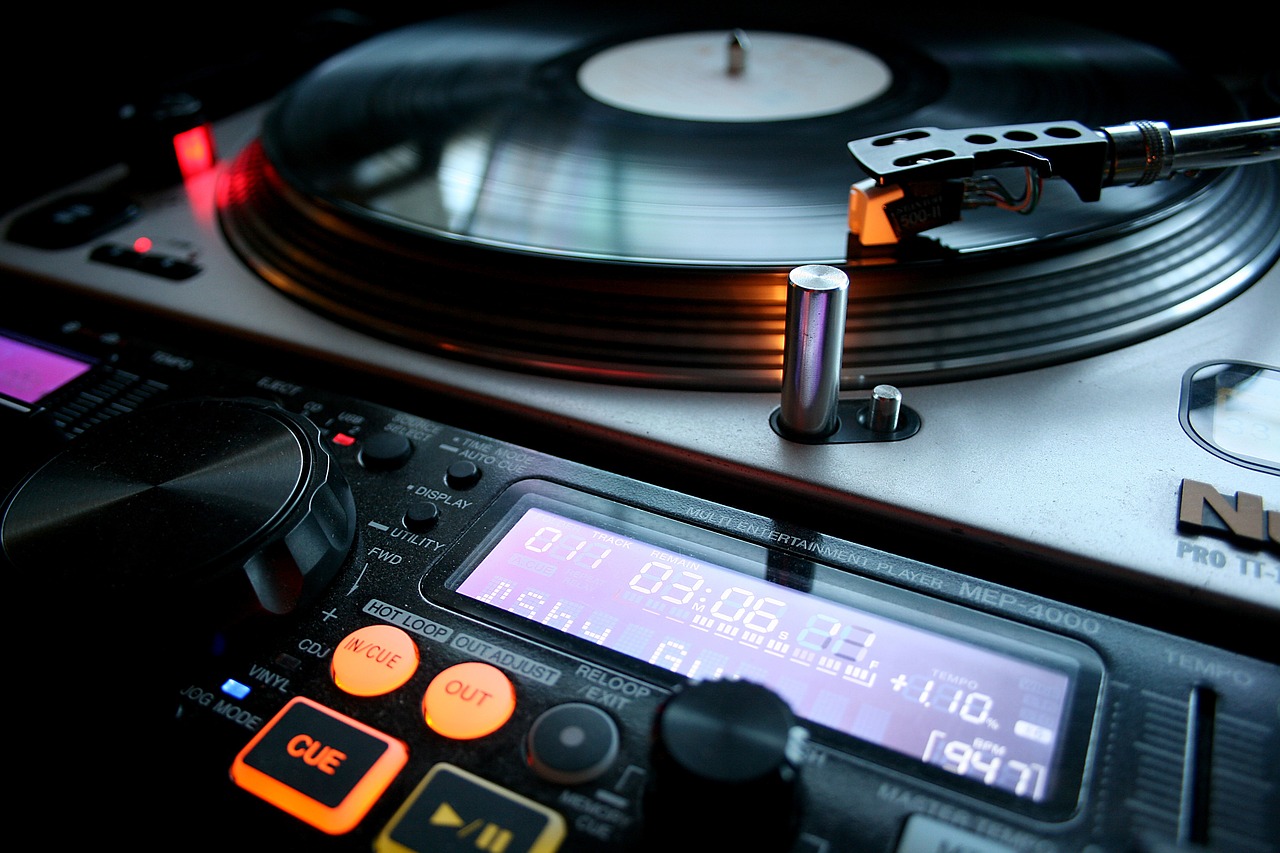DJing, an exhilarating blend of art and skill, captivates audiences worldwide. Whether you’re just starting or aiming to refine your technique, understanding the foundational elements is key. This guide offers essential tips and techniques to enhance your DJing journey.
Understanding Beat Matching: The Heartbeat of DJing
At the core of DJing lies the art of beat matching, a skill that remains indispensable in the arsenal of any DJ, novice or expert. Beat matching, at its essence, is the synchronization of the tempo and phase of two different tracks. This creates a seamless and harmonious transition between songs, ensuring the dance floor remains vibrant and the energy never falters.
But why is beat matching so crucial? Imagine a dance floor: it’s not just about playing one great track after another; it’s about creating a continuous musical journey. Abrupt changes in tempo or rhythm can jolt the audience out of their groove, breaking the immersive experience. Beat matching maintains the flow, keeping the audience engaged and dancing.
Here’s a deeper dive into mastering beat matching:
- Start with the Basics: If you’re a beginner, choose songs with straightforward, steady beats. This makes it easier to identify the beats and match them accurately.
- Train Your Ears: While modern DJ equipment and software often provide visual aids to help with beat matching, the most important tool is your ear. Being able to hear when beats are perfectly aligned is a skill developed over time. Practice by listening to the kicks (bass beats) and snares (sharp, higher-pitched beats) of each track.
- Tempo Adjustment: Use the pitch fader to adjust the tempo of the incoming track to match the playing track. Start by adjusting the speed until the beats align, then fine-tune it for perfect synchronization.
- Cueing Up: Learn to cue up your tracks effectively. This means setting up a track in your headphones and getting it ready to play precisely at the right moment.
- Practice Makes Perfect: Like any skill, perfection comes with practice. Spend time experimenting with different genres and tempos. The more you practice, the more intuitive beat matching becomes, eventually allowing you to do it swiftly and seamlessly during live performances.
Beat matching, in conclusion, is more than a technical skill. It’s about feeling the music and understanding how different tracks can be woven together into a single, uninterrupted musical experience. By mastering beat matching, you don’t just play music—you create an atmosphere, tell a story, and become the heartbeat of the dance floor.
Crafting the Perfect Setlist: More Than Just Playing Tracks
Crafting the perfect setlist is an art form, transcending mere track selection to create a memorable musical experience. It’s about understanding the mood, the audience, and the event’s essence, then weaving tracks together to tell a story. Here’s how to elevate your setlist creation:
- Understand the Event’s Theme: Tailor your music to fit the theme of the event. A beach party demands a different vibe than an upscale lounge.
- Sequence Matters: Start with lower tempo tracks to warm up the crowd, gradually build up the energy, then bring it down for a satisfying closure.
- Create an Emotional Journey: Mix in different moods and tempos. A well-placed slow track after a high-energy set can have a powerful impact.
- Keep Up with Current Trends: While classics are essential, incorporating current hits or underground tracks can keep your set fresh and exciting.
- Include Personal Favorites: Your passion for certain tracks will shine through in your performance. Don’t be afraid to throw in a few personal favorites.
- Leave Room for Surprises: Plan your setlist but leave some slots open for spontaneous selections. This flexibility allows you to adapt to the crowd’s vibe.
- Consider Transitions: Smooth transitions between tracks are crucial. Pay attention to key compatibility and tempo to ensure a cohesive flow.
By meticulously crafting your setlist, you’re not just playing music; you’re creating an atmosphere, evoking emotions, and giving your audience an experience they’ll remember. A thoughtfully crafted setlist can set you apart as a DJ and build a loyal following.
Advanced Mixing Techniques: Elevating Your Performance
Once you’ve mastered the basics, it’s time to add flair to your performance. Techniques like EQing, looping, and using effects can add depth and character to your sets. Remember:
- Use EQ Wisely: Balance the bass, mid, and treble to blend tracks smoothly.
- Loop Creatively: Use loops to extend breaks or build up energy.
- Experiment with Effects: Reverb, delay, and filters can add excitement, but use them sparingly.
Building Your Unique Sound
Developing a unique style is crucial in the saturated world of DJing. Experiment with different genres, create your remixes, and don’t be afraid to take risks. Your unique sound is your signature.
Closing Thoughts: Continuous Learning and Adaptation
The world of DJing is ever-evolving. Stay updated with the latest trends, technology, and music. Attend workshops, watch tutorials, and most importantly, practice relentlessly. Your journey as a DJ is a blend of skill, creativity, and adaptability – embrace it!
Remember, the essence of DJing lies in connecting with your audience and sharing your passion for music. With these techniques and tips, you’re well on your way to becoming a master of the decks. Happy spinning!
